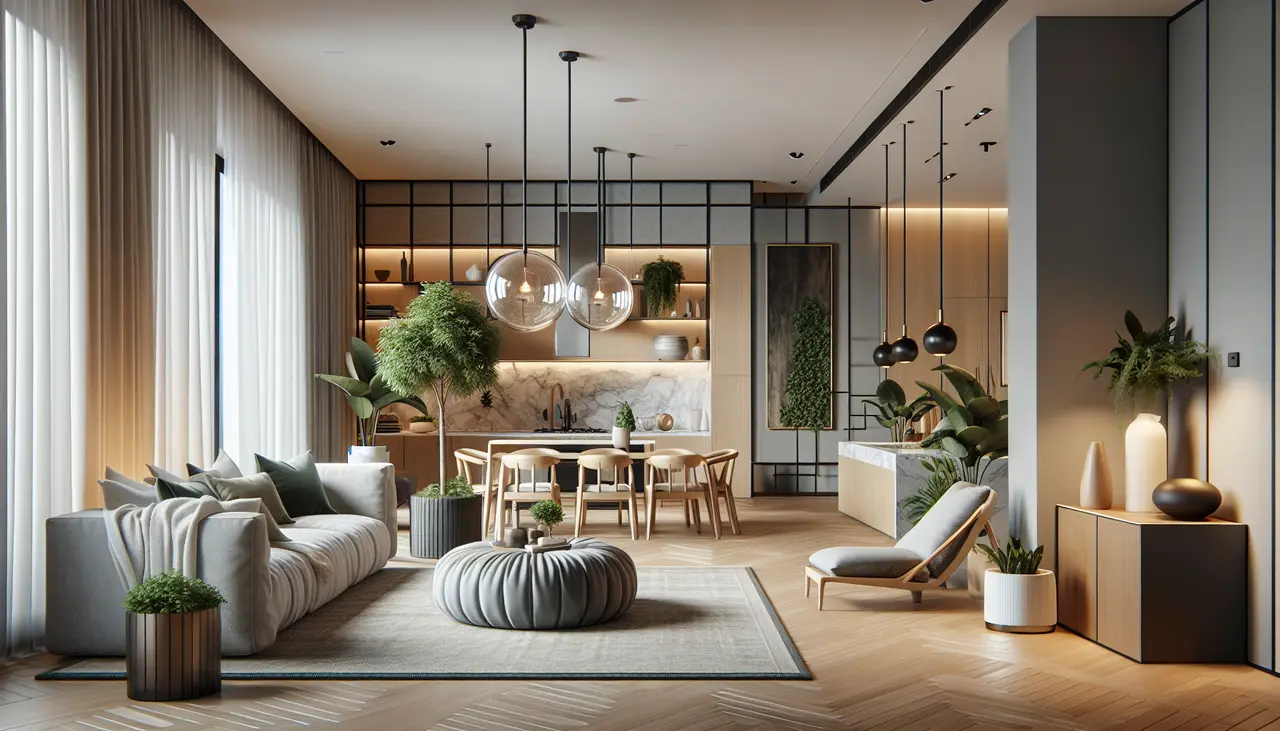Embarking on a new build is an exciting journey, offering a blank canvas to create a home that reflects your personality and style. However, it can also be overwhelming with so many design options available. To help you navigate this process, we have compiled ten essential tips that will guide you in making the most out of your new build interior design.
1. Define Your Style Early
Before making any design decisions, take time to explore various styles and decide on a theme that reflects your personal taste. This will provide a cohesive foundation to build upon throughout your home. Explore Rachel Blindauer’s insights for inspiration from a top design firm.
Consider creating a mood board with images, colors, textures, and patterns that appeal to you. Use digital tools or scrapbooks to arrange your ideas visually. This step is crucial because it allows you to see how different elements interact before committing to them.
2. Maximize Natural Light
Strategically placing windows and choosing light colors can enhance the natural light in your home, creating an open and inviting atmosphere. Consider floor-to-ceiling windows or skylights for areas like living rooms and kitchens to maximize sunlight.
Another great way to enhance natural light is by using reflective surfaces. Glossy floors, mirrors, and metallic fixtures can reflect light and make the space feel larger and more open. Choose furniture with lighter tones to complement this effect.
The direction your windows face plays a significant role as well. North-facing windows give consistent light but less glare, while south-facing ones tend to bring in more warmth. East-facing windows are great for morning light, and west-facing ones capture sunsets beautifully.
3. Consider Open-Plan Living
Open-plan spaces are popular in modern homes for their versatility and spacious feel. Consider this layout to foster connectivity and ensure seamless transitions between areas. It allows family members to be engaged, even when in different sections of the house, creating a unified environment.
When planning an open space, consider using furniture to delineate areas without disrupting flow. For instance, a sofa can separate the living room from the dining area, providing visual distinction without walls. Rugs can also define different zones, adding texture and warmth to the floors.
4. Prioritize Functionality
While aesthetics are important, your home should also accommodate your daily routines. Plan spaces that are functional and practical for the entire household. For instance, consider workflow in kitchen design, ensuring that appliances are conveniently placed for cooking efficiency.
Consider the needs of each family member. A hobbyist, for example, might require a dedicated studio space, while families with children might prioritize play areas. It’s all about creating spaces that work for your lifestyle.
5. Utilize Smart Storage Solutions
Incorporate built-in storage to maintain an uncluttered look. Custom cabinetry and clever storage options can help maximize space while enhancing the design. Think about cabinetry that extends to the ceiling or multi-functional furniture that doubles as storage.
Consider innovative storage solutions like floating shelves, under-stair storage, or wall-mounted organizers. These not only save space but also add an aesthetic element to your decor.
6. Select Timeless Materials
Invest in high-quality materials that offer durability and timeless appeal. This will ensure your interior remains stylish and robust over time. Natural materials such as stone or wood not only age well but also add a touch of sophistication.
Consider eco-friendly materials that are both sustainable and durable. Trends come and go, but materials like bamboo or reclaimed wood remain evergreen due to their classic and environmentally conscious nature.
7. Embrace Technology
Integrate smart home features that enhance convenience and efficiency, such as automated lighting, climate control, and security systems. A home equipped with technology isn’t just about convenience; it’s about future-proofing your investment.
Explore systems that allow for remote control, providing ease and security even when you’re away from home. Smart thermostats and voice-controlled assistants make daily life more seamless and luxurious.
8. Choose a Neutral Color Palette
Neutral colors provide a versatile backdrop that can be easily updated with trendy decor items. They also promote a calm and serene environment. Explore the concept of calm interior design to create a peaceful space.
Shades like beige, gray, and soft white create a supple background that makes vibrant artwork or dramatic furnishings stand out. This flexibility allows you to frequently refresh your decor style with minimal effort.
9. Incorporate Texture for Depth
Add interest to your interiors by layering different textures. This can be achieved through textiles, flooring, and wall treatments. Consider soft rugs, tactile wallpapers, and plush furniture to create rich, inviting spaces.
Textures can also come from unexpected sources, like greenery or water features, which add both a visual and tactile experience to your space. Incorporating elements like these can transform a room from flat to fabulous.
10. Focus on Quality Finishes
Quality finishes can elevate the overall aesthetic of your home. Pay attention to details, such as fixtures, hardware, and finishing touches. High-end finishes on kitchen hardware or bathroom fittings can provide a luxe look without major renovations.
Additionally, focus on finishes that align with your home’s climate. For example, living in a coastal area might require finishes that withstand humidity and salt exposure.




